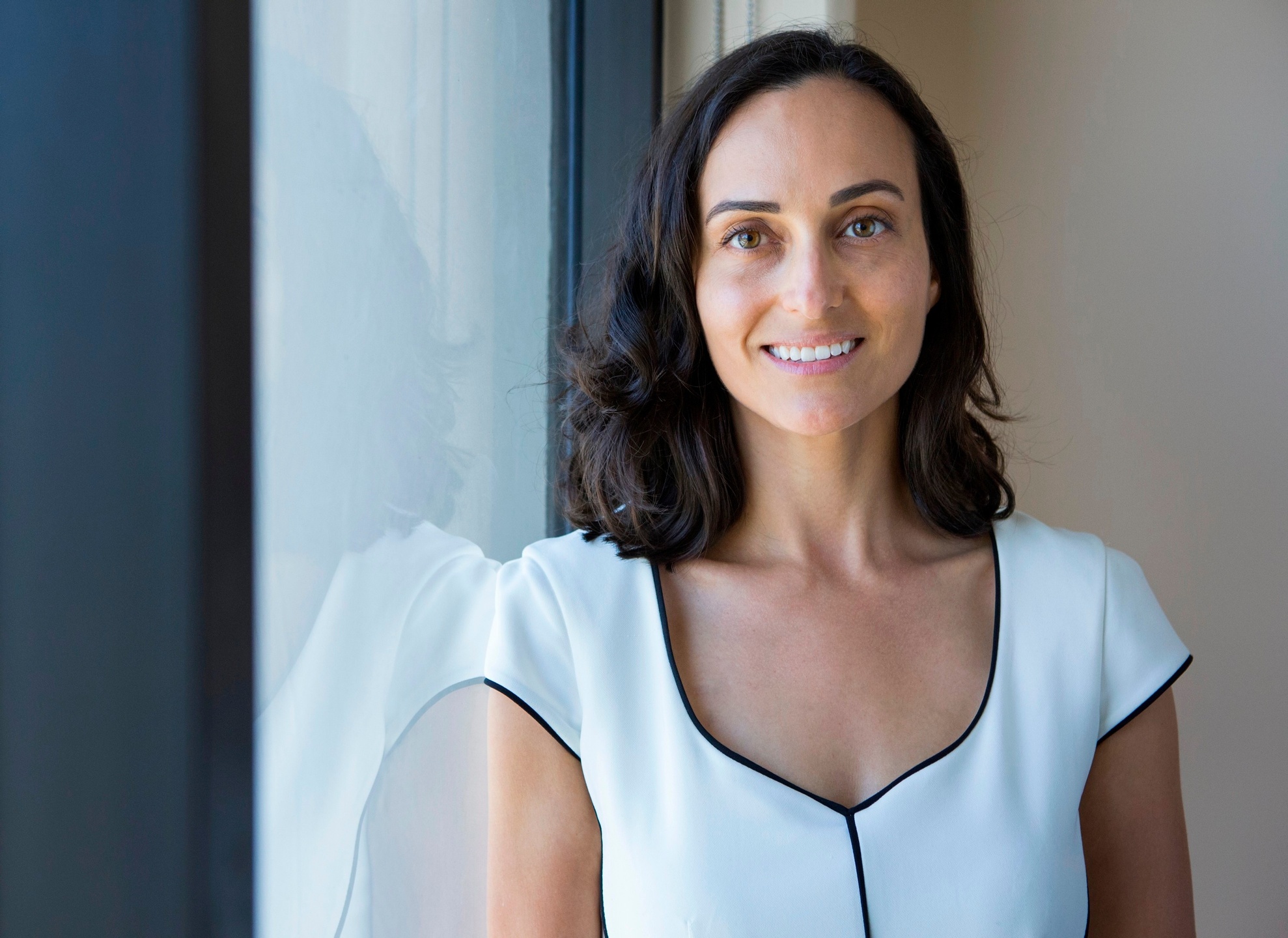Break down the barriers of a life controlled by PTSD and start living a happier, more fulfilled life.
What if you could live without being afraid to do things?
What if you could shut-off the intrusive thoughts and recurring nightmares?
What if you just had the direction you needed to get the right treatment, without cycling through new therapists, re-sharing your experiences, and spending thousands of dollars?

Hi, I'm Dr. Elana Miller, integrative psychiatrist and 2X cancer survivor.
When you’re struggling mentally or emotionally, it’s hard to know where to find help you can trust.
After 10+ years of being a physician, studying integrative psychiatry, and working with hundreds of clients from all over the world, I’ve discovered the frameworks, methods, processes and mindset needed to overcome mental and emotional obstacles and live a purposeful, happy, and thriving life.
I'm here to teach you exactly what you need to know about PTSD and how to treat it.
If you've survived a traumatic event, you've probably experienced thoughts like this,
"I feel so disconnected from my life. I've tried to suppress the negative memories and cut out the people and places that make me feel bad... so why do I not feel better?"
Talking to a therapist on a weekly basis has been helpful, but you’ve been doing that for years, and something still feels off. You’re not exactly depressed...
...But you don’t feel happy, either. Symptoms of PTSD still show up in your daily life:
- Intrusive thoughts of the trauma pop into your head at random moments
- Your world becomes smaller and smaller as you have to work harder to avoid triggers and reminders of what happened
- You feel on edge all the time -- as if you have to protect yourself from constant threats.
- Emotionally, you feel closed off and even numb
But you’re not exactly sure what you should be doing to fix it. After all, this is just
“something that I’ll live with for the rest of my life”, right? No.
When a person has PTSD it’s easy to romanticize the past and believe that you’ll never get back “there” again. I’m here to show you how that is not the case.
There's a feeling inside of you that says you can't accept living this way for the rest of your life -- I know this, because I've experienced it too.
I was unexpectedly diagnosed with Acute Lymphoblastic Lymphoma in December 2013, just six months before I was supposed to graduate from my residency in psychiatry at UCLA. I immediately had to take a medical leave, stop working, and start what ended up being very intensive 3-year chemotherapy protocol.
It took about a year and a half after my treatment ended for me to recover physically, but what I started to notice was that even though I wasn't physically sick anymore, something still didn't feel... right.
My daily routines were centered around avoiding anything that reminded me of cancer -- not just real situations, but the memories too.
I felt removed from the world.
I didn’t want to connect with people. I just wanted to be home, in my safe space.
I suppressed every thought and memory of the treatment and experience.
Commercial for a cancer drug on TV? Immediately switched the channel. A friend asking how I was recovering after the treatment? Didn’t respond to the text message.
Because I was a psychiatrist, and had previous experience treating combat veterans who had overcome severe PTSD, I knew exactly what type of treatment I needed to seek out: Prolonged Exposure (PE) therapy.
The problem is that there is a lack of information when it comes to understanding PTSD.
And if we don’t really understand it, how can we properly treat it?
I have found that there is no condition more treatable, but so misunderstood. Unfortunately, this has led to so many people not getting the treatment needed to fully heal. I've talked to so many people that believe that PTSD is a chronic condition that they'll live with for the rest their lives... but that couldn't be further from the truth.
In traditional therapy and psychology settings it’s typical to treat PTSD with talk therapy, body somatic therapies, and medication. These treatments can be a very helpful part of the overall plan, but are often not enough. Maybe you’ve tried these approaches and others, but still feel like something is missing. Why’s that?
Because you can spend years talking around your trauma not realizing that in order to overcome your fear, you have to face it head on.
Just like an infected wound that’s been covered up and not healing properly, you have to peel the bandage back to really examine it, needle at the wound, and clean out the bad parts. It’s going to hurt, but when the bandage goes back on the wound is going to heal right.
Introducing
Overcoming Trauma & PTSD With Exposure Therapy
by Elana Miller, MD, Psychiatrist
I’ve taken everything I’ve learned from treating Iraq and Afghanistan veterans and victims of childhood abuse, sexual assault, serious medical illness, and natural disasters and paired with my own experience of recovering from PTSD to create Overcoming Trauma & PTSD With Exposure Therapy.
This is a single program dedicated to informing you on what exactly PTSD is, how it's treated with exposure therapy, and the exact protocols I use with my patients to overcome trauma and move forward with their lives.
Every patient I've taught this protocol to has told me it's radically changed their life.
I'M READY TO JOIN
Now if you're anything like the patients who have stepped into my office you may be thinking,
"Are you crazy, I have to recount my experience over & over again? That sounds really hard and overwhelming."
And I won't lie to you, it is. But let me also ask, is the alternative worth it?
If you project your life 5, 10, even 15+ years out from now, will you be satisfied feeling the same way?
If the answer is yes, then that is great! But if the answer is no, then what is holding you back on getting the help you need right now? Living a life free from PTSD and overcoming your trauma looks like...
+ Expanding your world without being afraid
+ Getting the best sleep of your life, no longer interrupted by nightmares or night terrors
+ Being open to new experiences -- new relationships, traveling, and hobbies
+ Being able to trust again
+ Having what you do in your day be a choice rather than a habit
+ Believing that your happiest days are in your future, not your past
...and if you're ready to get to that point now, this is EXACTLY the place to start. No more confusion on what you should be be doing, who you should be seeing, or how to be an advocate for yourself during treatment. I provide all of that to you and more!
As I developed the Overcoming Trauma program, I realized that without exposure therapy my life would look very different today than it would had I not pursued this type of treatment.
My follow-up appointments at the oncology center are no problem now, and they don't ruin my day (or the days leading up to it either). When friends ask to get together to catch up I say yes (except for Fridays... that's my 'me time' :-)).
My point is that you have a life ahead of you that's waiting to be lived, not suffered through. It's not worth living another minute pushing off your happiness, fulfillment, or joy.
In the program you'll learn...
MODULE 1
What is PTSD?
No more misconceptions or misdiagnosis. This module outlines a clean, concrete overview of what PTSD is, and what PTSD is not based on the DSM-5 (our diagnosis “bible” of psychiatry). It’s about identifying your symptoms and creating a foundation before we discuss how it develops and the treatment protocols.
In this module I walk you through my experience with PTSD and how I became an expert in treating the condition. I also share the 4 symptom clusters of PTSD, and what the daily experience looks like for someone who is struggling with PTSD (based on my experience and my patients' experiences). Plus, you'll get access to resources like the PTSD rating scale and DSM criteria cheatsheet.
MODULE 2:
How Trauma Leads to PTSD
This module is all about understanding how trauma leads to PTSD. I’ll show you how major catastrophic events (like 9/11) were studied to show how PTSD is developed, and why some people get PTSD while others do not.
You will also learn about the predisposed factors (like age, gender, and childhood history) that contribute to the onset of PTSD, both pre-trauma, during the trauma, and after the trauma.
MODULE 3:
What Is Exposure Therapy and How Does it Work?
This is the most extensive module in the program. I will help you understand what exactly exposure therapy is, and how it works to treat PTSD. I teach you the exact protocols I use with my patients who are ready to start PE -- the pre-prep work, in-session process, and what our post-PE follow up sessions look like. After completing this module, you will know how to work the PE protocol on yourself.
You will also receive the worksheets and resources I share with my patients during each stage of the process including an Exposure Hierarchy Form, Imaginal Exposure Recording Form, and SUDS scale.
MODULE 4:
Complex PTSD (cPTSD)
In this module you will learn the difference between complex PTSD (cPTSD) and 'regular' PTSD, and how that impacts treatment protocol.
I also cover the benefits of treating cPTSD with Dialectical Behavior Therapy (DBT) and de-bunk many of the pre-conceived notions about who DBT is for, and cover the 4 key skillsets that are developed during DBT treatment.
MODULE 5:
Getting Help & Your Next Steps
This module recaps everything covered in the program and goes over your next steps. I share my hub of resources I’ve built over the years on how to find a therapist in your area that specializes in PE, and other books, workbooks, training and articles that I recommend to get the most out of your healing process.
Remember, treating PTSD is very specialized and a lot of therapists may not be familiar with this protocol (just like how your heart doctor wouldn’t be your kidney doctor). If you see a therapist now, you can still work with a PE-specialized in tandem with your current therapist without overlapping.
What are the 3 main differences between the Overcoming Trauma online program vs. seeking help on your own?
1. ON GETTING STARTED
Help on your own: “I don’t know where to start, there are so many therapists out there… psychologists, psychiatrists, specialists? I’m not sure who is the best fit for me, or even what type of treatment I need based on what I experienced, and continue to experience. Do I have PTSD, cPTSD, or something else? I’m not really sure.”
People with the program: “I am so relieved to know exactly what type of PTSD I have, and to have a detailed plan on how to work an exposure protocol on myself. The worksheets and PTSD guide were extremely useful to help me organize my thoughts and bring the exposure practices to fruition. I started my first exposure 2 days after purchasing this program."
2. ON MONEY SPENT
Help on your own: “Whoa, a lot of these PTSD-specialized treatment providers don’t accept insurance. How many sessions is it going to take to share my experience, choose a treatment plan, and actually start the work?”
People with the program: “This was the most comprehensive information about trauma & PTSD that I've received in one place, from one person. I feel so informed not only on what my condition is, but also prepared to take action and measure my own progress immediately. Having this information to reference back to forever is invaluable."
3. ON IMMEDIATE HELP
Help on your own: "Just when I found a treatment provider who I really liked... our schedules no longer sync. I don't have the flexibility to take time off in the middle of the work day for these appointments. I also feel like I need support on a weekly basis, so only meeting once a month doesn't feel effective for the type of support I am looking for."
People with the program: “Using the tactics from Elana, I have my exposure hierarchy clearly outlined. I have started working the protocol on myself with my less severe traumatic memories, and will seek a specialized therapist for the more extreme memories. I already used the resources from the program to find a treatment provider in my area who is already familiar with PE-therapy so we can get started right away.”
SOUNDS GOOD SO FAR!
How Much Does It Cost?
First, let me tell you how much I paid to get my PTSD treated:
-
$400 per session
-
Weekly sessions for 5 months
For a total of $8,660.
(And PE-specialized therapists generally do not accept insurance, because unfortunately insurance companies don't properly compensate mental health providers for the important work they do).
And I can tell you that when I see patients one-on-one in my private practice, I charge more than this (because I'm a psychiatrist and not a psychologist, so I'm also equipped to prescribe medication and practice functional medicine).
In my private practice patients pay me up to $10,000+ to get the same information I'm sharing in this program.
If you're curious, you can see a list of my private practice fees here (and I have a waitlist to accept new patients!)
When you sign up today, you get automatic access to all module videos, protocol templates, trauma journal, and extensive resources.
But above all you get...
The clear, step-by-step direction you need to live a life free from PTSD.
This program is not meant to be a substitute for seeing a professional, but it WILL provide you with the knowledge of EXACTLY what condition you may have, and how to start treating it immediately - all for a fraction of the cost.
You can get started today for:
3 monthly payments of $198/month
Join The 3-Month PlanA one-time payment of $497
Pay In Full6 monthly payments of $107/month
Join The 6-Month PlanBONUS OFFER -- LIMITED AVAILABILITY
Customized Exposure Protocol
For a limited number of people I am offering the option to purchase a customized exposure protocol with the program.
This is an add-on feature only available to 10 people.
How it works: you will complete a detailed questionnaire about your trauma experience, and your current and historical treatment plans. I will provide a personalized assessment and exposure protocol specific to you. You will also receive a recorded video from me walking through your assessment for full context.
Custom assessments are the best way to receive personalized guidance from me for a fraction of the cost to meet with me one-on-one.
Here's an exact email response I received from someone who just completed a custom protocol...

Custom exposure protocols are an additional $497 and are ONLY available when you purchase the program (this will no longer be available on you enroll in the program).
To purchase a custom protocol, click the box "Yes, I'd like to add a Personalized Exposure Protocol" on the checkout page.
Here are a few of the different topics that I cover:
+ What the daily experience & stories of people with PTSD sound like
+ How to know if you (or someone you care about) is suffering from PTSD by identifying the symptom clusters
+ Why some people develop PTSD, and others do not
+ What the SUDS scale is, and how to use it to measure your anxiety and progress in overcoming traumatic memories
+ How to create "imaginal" and "in vivo" exposure therapies specific to the trauma you've experienced
+ How to find therapists in your area that specialize in PE
+ The difference between Complex PTSD (cPTSD) and PTSD, and how to adjust your treatment protocol for cPTSD
+ The resources needed to find PE & DBT therapists


WHO DOESN'T LOVE EXTRAS? ON TOP OF THE VIDEO MODULES, YOU'LL ALSO RECEIVE BONUS MATERIAL TO SUPPORT YOU THROUGHOUT THE PROGRAM.
+ A 6-video bonus module on relaxation & mindfulness practices to work through alongside the program. You will learn how to transform chronic worry, fear, and anxiety into calm and inner ease WITHOUT depending just on medication.
+ The exact exposure hierarchy forms that I use with my patients before, during, and after exposure therapy sessions. You’ll be able to follow along with the protocol in my videos, then use these forms to customize your own exposure protocol specific to your trauma.
+ Access to my hub of PE and DBT therapy resources -- including custom workbooks, books & articles, and how to find a specialist in your area.
+ Information on how to integrate a trained PE-therapist into your treatment if you’re already seeing a therapist (note: if you like your current therapist but he or she doesn't do PE, it's okay to have both!)
Answering all of your questions about trauma & PTSD
As you start to work through the video modules and worksheets, it’s inevitable that questions will come up. Once you’re enrolled in the program, you will have the ability to leave comments on each video module. My team & I will help answer any questions you have as you work through the program.
You’ll find answers to some of my trauma FAQs too, like:
-
How long after trauma does PTSD occur?
-
What is the difference between PTSD and cPTSD?
-
How is trauma treated differently for someone who suffered a childhood trauma vs. a trauma that happened in adulthood?
-
Why hasn’t my therapist or psychiatrist mentioned PE or DBT as treatment options?
-
How do I find a therapist who specializes in prolonged exposure therapy in the United States?
Still on the fence?
Watch this video clip from my Instagram Live series when someone asked me why they should join the program:
3 monthly payments of $198/month
Join The 3-Month PlanA one-time payment of $497
Pay In Full6 monthly payments of $107/month
Join The 6-Month PlanHi, I'm Dr. Elana Miller

After 10 years of treating patients with chronic PTSD (and experiencing it myself) I wanted to create a one-stop-hub with the information, resources, and treatment strategies that actually work to treat PTSD.
So many times I’ve met with new patients who believe that they will never recover from their PTSD (I’ve had patients struggling with this for 40+ years…), until they try exposure therapy.
I had my own experience overcoming PTSD with exposure therapy after a 3-year stint of intensive chemotherapy and cancer treatment. After remission, I immediately knew that I needed to seek a therapist who specialized in exposure therapy after seeing the success of my own patients’ treatment results.
And, it worked.
As I started seeing more patients after my remission, I realized just how many people believe that PTSD is a chronic condition that they have to deal with for the rest of their lives. It makes me so sad to know that the treatment methods and modalities are out there, but aren’t well known or marketed.
My goal for this program is to give you a clear understanding of what PTSD is, how it is developed, and the best strategies used to treat it. I’ve bundled ALL of my resources that I’ve referenced over the years (and still do to this day) to help treat patients with PTSD so you can make the best, most informed, decision about your healing.












